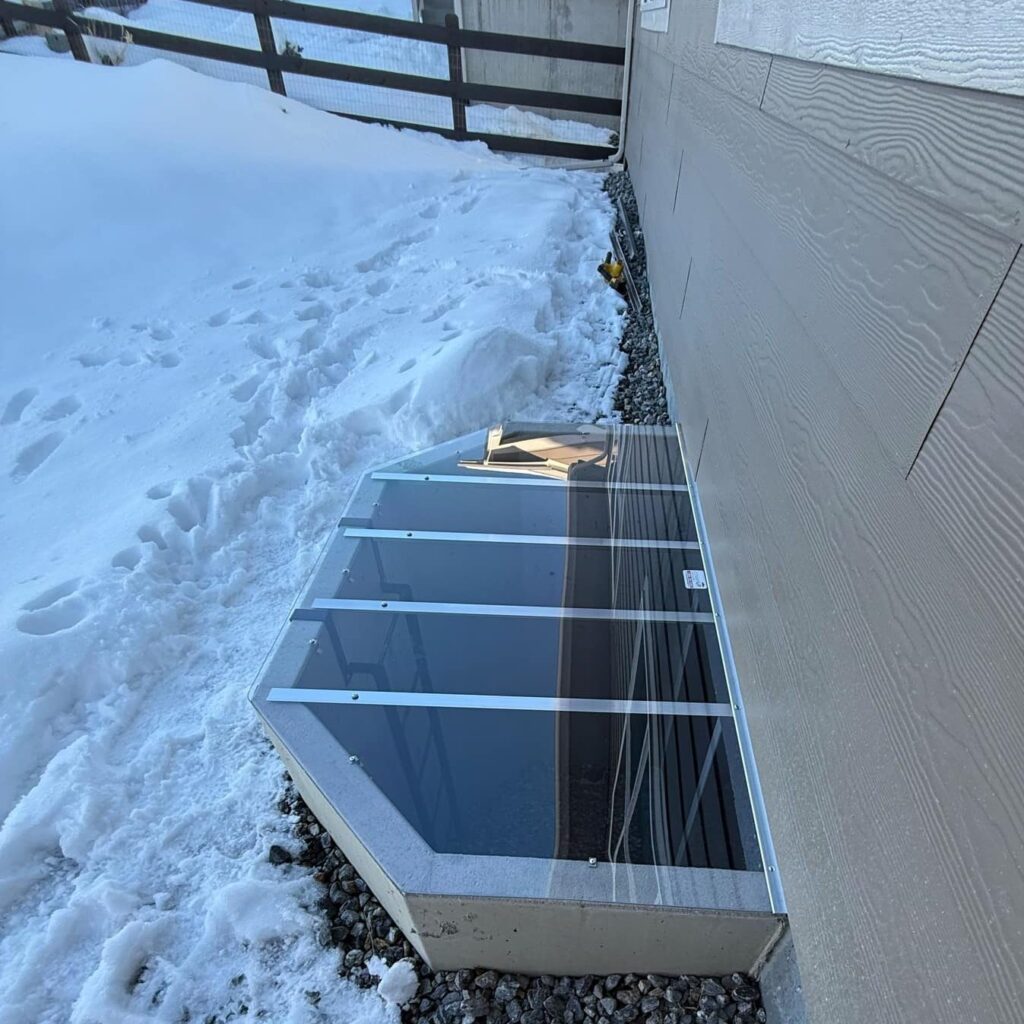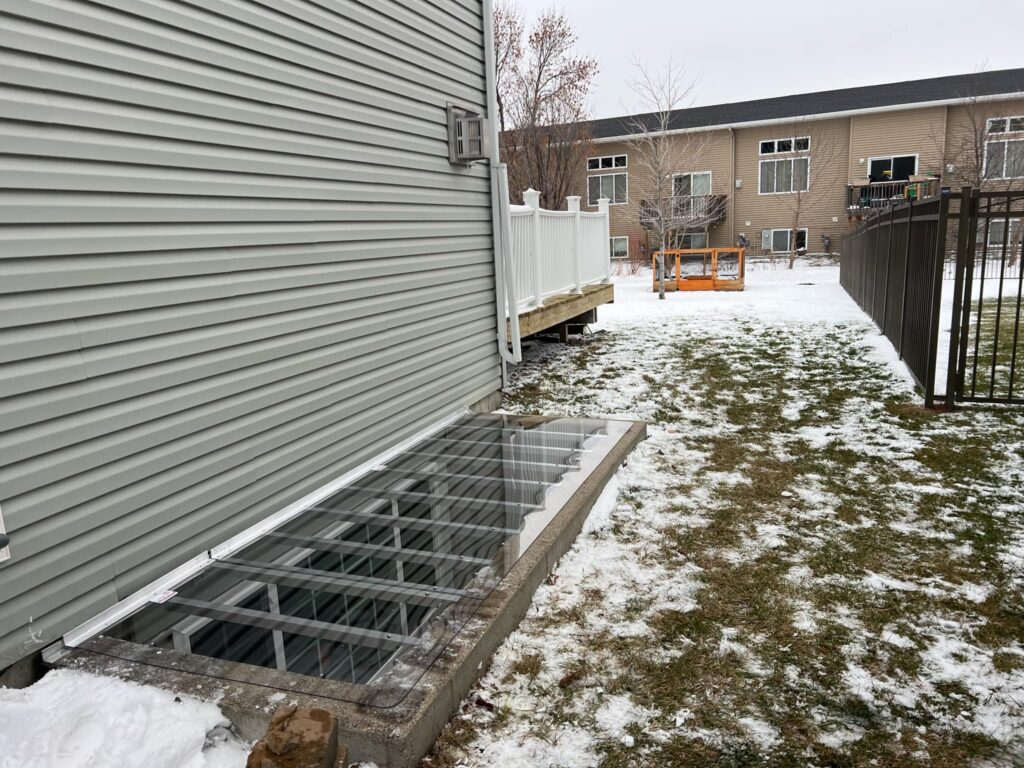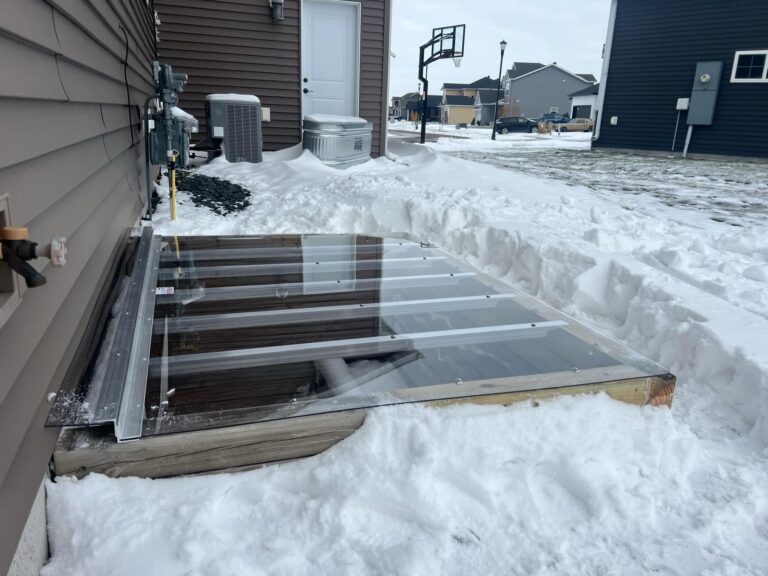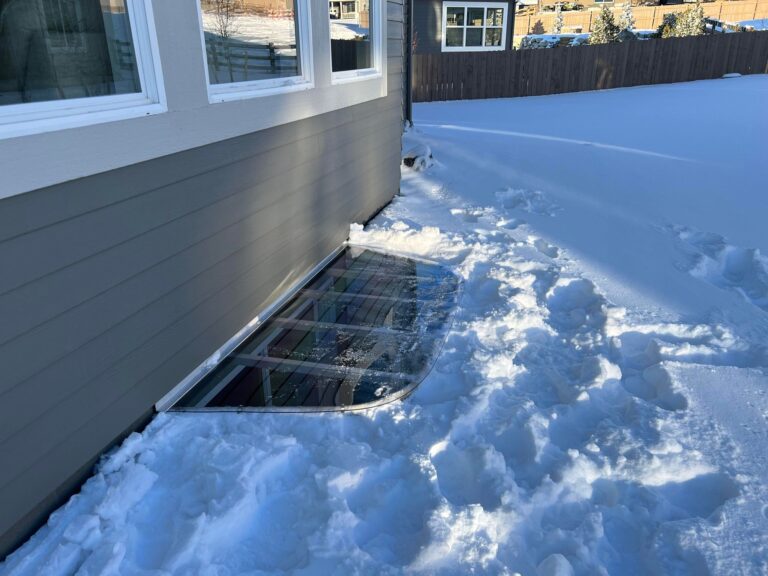As winter settles in across Denver, homeowners may notice condensation forming on their window well covers. While condensation is a natural occurrence due to temperature differences between indoor and outdoor air, excessive moisture buildup can lead to mold growth, ice formation, and even window damage. Understanding the causes and solutions for condensation on window well covers can help protect your home and ensure clear, functional window wells all winter long.

Why Does Condensation Form on Window Well Covers?
Condensation occurs when warm air from inside your home meets the cold surface of your window well cover. This rapid cooling causes water vapor to turn into liquid, leading to visible moisture on the cover’s surface. Factors that contribute to condensation include:
- Indoor Humidity Levels – High humidity inside your home increases the likelihood of condensation forming on cooler surfaces.
- Temperature Fluctuations – Denver’s unpredictable winter weather causes frequent shifts between warm and cold air, leading to condensation buildup.
- Poor Ventilation – A lack of airflow inside the window well can trap moisture, worsening condensation issues.
Potential Issues Caused by Condensation
While a little condensation may seem harmless, persistent moisture buildup can lead to several problems:
- Mold and Mildew Growth – Excess moisture provides the perfect breeding ground for mold, which can affect indoor air quality and cause health issues.
- Ice Formation – As temperatures drop, condensation can freeze, leading to thick layers of ice on window well covers, making them difficult to open in emergencies.
- Window Damage – Prolonged exposure to moisture can weaken window seals, leading to leaks and water damage inside your basement.
How to Prevent and Manage Condensation on Window Well Covers
To keep condensation under control, consider these effective solutions:
1. Improve Indoor Ventilation
Reducing humidity levels in your home can help minimize condensation. Use exhaust fans in kitchens and bathrooms, and consider using a dehumidifier to maintain optimal indoor moisture levels.
2. Use Insulated Window Well Covers
Investing in high-quality, insulated window well covers can reduce the temperature difference between indoor and outdoor air, minimizing condensation formation.
3. Ensure Proper Drainage
Blocked or poorly designed drainage systems can cause excess moisture to accumulate in window wells. Regularly check and clear drains to prevent water buildup.
4. Add Small Ventilation Holes to Covers
For homes with persistent condensation issues, adding small ventilation holes to window well covers can help improve airflow and prevent moisture from accumulating.
5. Keep Window Wells Clear of Snow and Ice
Snow and ice buildup in window wells can contribute to condensation issues. Keeping the area clear ensures better air circulation and prevents trapped moisture from freezing.

Protect Your Home This Winter with CoverUp Window Wells
Preventing condensation is key to maintaining safe and functional window wells during Denver’s cold months. At CoverUp Window Wells, we offer durable, custom-fit window well covers designed to withstand winter conditions while providing proper ventilation. Contact us today to learn more about how our covers can help keep your home dry and secure this season.




